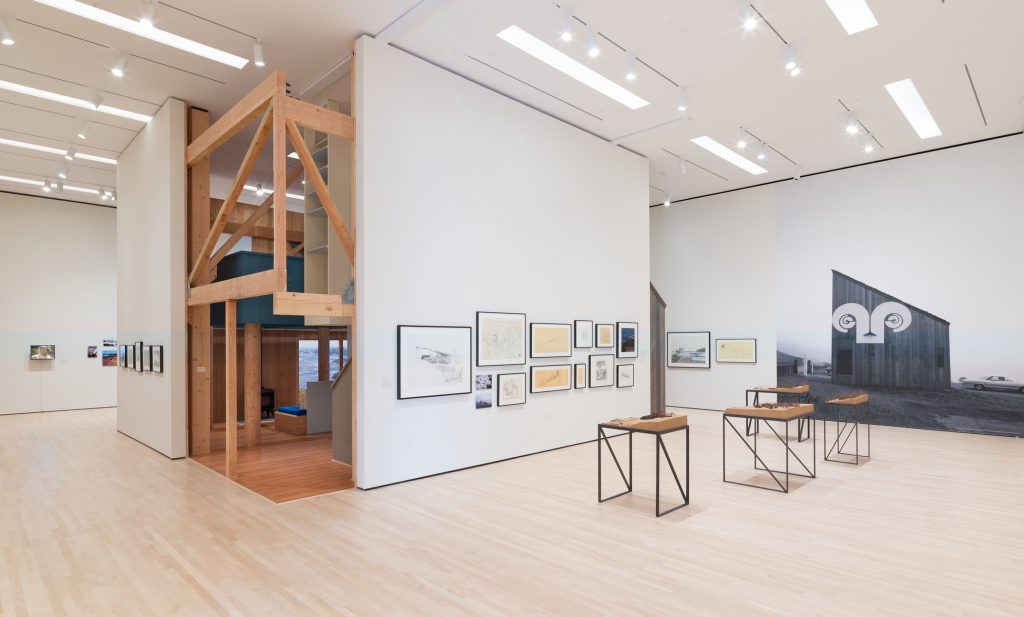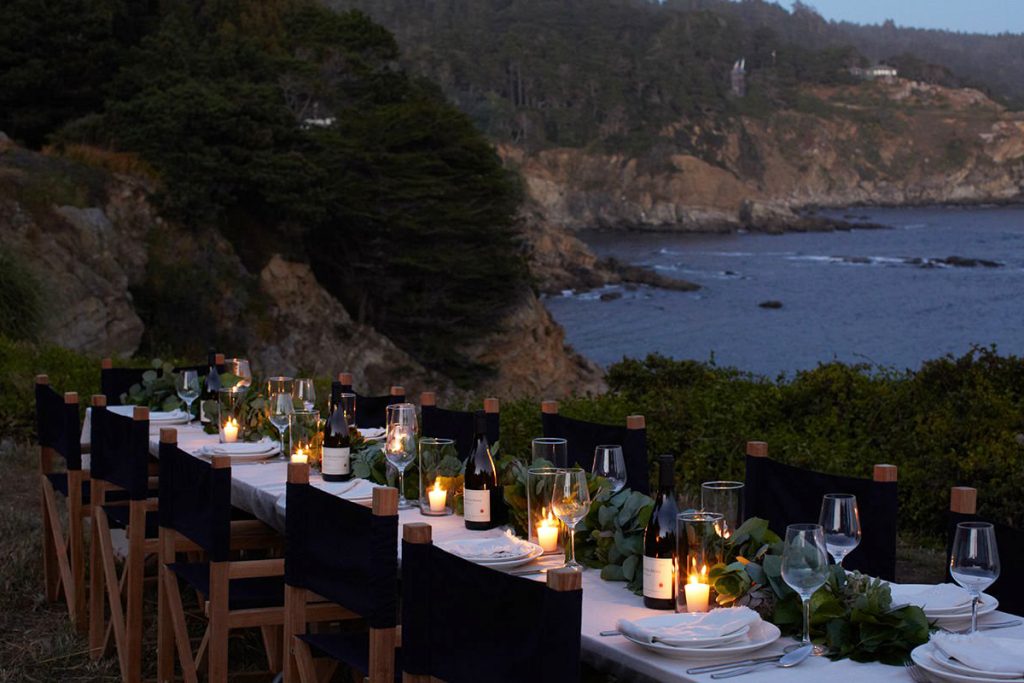SFMOMA’s “The Sea Ranch: Architecture, Environment, and Idealism” Exhibit + Unbeaten Path Tours’ On-Site Exploration
Two ways to spotlight the idyllic architectural development on the Sonoma Coast

Along California’s Highway 1, past Bodega Bay and Jenner, 100 miles north of San Francisco, the rugged coastline is at times barely visible. Along the curving road, unpainted wood homes can be spotted through the trees and meadows. This part of the Northern California coast feels both earthy and otherworldly.
It is here that the Sea Ranch concept, a radical architecture experiment, aimed to become a model community with a commitment to “live lightly on the land.” It was conceived in the mid ’60s by developer Al Boeke with a group of architects, graphic designers and landscape architects. SFMOMA‘s exhibition “The Sea Ranch: Architecture, Environment, and Idealism” tells the story of this beacon of modernism using original architectural drawings and sketches, photography, and a full-scale replica of one of the first living spaces built there.

“It has always been important to connect our agenda at SFMOMA to the history of the Bay Area and certain origin stories in Bay Area architecture,” says co-curator Joseph Becker. While the museum was closed for their recent expansion, Becker took the opportunity to do a two-week residency up in Gualala, just north of the Sea Ranch. There he had an opportunity to experience the landscape and learn more about the history of the area by talking with homeowners, original participants, and some of the design committees and review panels.
The exhibition focuses on the first few years of the Sea Ranch, when its idealism was the primary motivating factor in design decisions. For the exhibit, Becker and co-curator Jennifer Dunlop Fletcher wanted to find a way for museum visitors to experience the feeling of the Sea Ranch. This is why they decided to include the full-scale construction of a unit in Condominium 1. The unit, owned by Charles Moore, has been recreated with careful attention to detail. There’s even an Iwan Baan photograph of the Sea Ranch coastline and the Pacific Ocean.

“There is a level of immersion that we are bringing people into,” says Becker. “And an experience of the materiality of the site in as much as we can do within the museum.” Becker and Fletcher worked with the Penn Archive, which hosts the archive of landscape architect Lawrence Halprin, and the Berkeley College of Environmental Design archive, which has Joseph Esherick and MLTW’s archived works. Drawings by Esherick document his initial analysis of the site. “Not just in terms of flora and fauna, but kind of a historical perspective on what is the human impact on a site,” explains Becker. “That helps root us in kind of a sensitivity toward the environment that the human scale is so small compared to the geological scale, which created this incredible landscape.”
From Highway 1, the Sea Ranch coastline looks sparsely populated. “All of these materials really show the interplay of built and unbuilt responsiveness of certain design decisions to site conditions. For example, the slope of the pitched roofs corresponding to the growth patterns of the wind blown cypress trees,” says Becker.

Becker reached out to Danelle Guthrie, a professor at UC Berkeley, who owns a home in Sea Ranch with her husband Tom Buresh, the Dean of the College of Environmental Design. Initial conversations about them as homeowners and as architects led the curators to ask Guthrie to have her students help produce models for the exhibit.
“The exhibition helps tell the story and give you the context of why it is such an important and iconic architectural development—not only in the history of Northern California but in global architectural interest,” adds Becker.

After seeing the exhibit at SFMOMA, visitors will most likely desire a trip to the Sea Ranch itself, to see how the design lives and breathes. Margaret Lindgren of Unbeaten Path Tours offers walking tours of the area to learn about the architecture, topography and wildlife. “We experience the landscape, the oceanography and the surrounding environment at the same time that we learn about Sea Ranch architecture in the very first phase,” says Lindgren.
When asked to describe what it feels like to be inside a Sea Ranch home Lindgren replies, “I have been in Condo 9, which was Charles Moore’s unit. It has a northwestern view. With the heavy timber construction, you feel protected and safe and open and free, almost like you are in the beyond. When you look at the ocean you cannot see the ground. You feel like you are floating above water.”

Lindgren has developed and refined her tour over time. She worked in the Sea Ranch design review office and learned about the need for preserving the integrity of the new construction. “I like to begin dialogue by starting at this old barn that’s right on the lodge property,” says Lindgren. “I like to look at the original architecture of the region and introduce it that way. You see very simply from the barns that are iconic for the Northern California Coast. They had to last in this weather up here, which is pretty severe. They call it the Scottish coast of California, so these buildings had to respond to the conditions.”
“Then we see how that concept is applied in some of the early Sea Ranch structures. Halperin very quickly realized that to inhabit the land was to be sensitive and responsive to the conditions,” adds Lindgren. She offers a visual overview of phase one, the first section developed, pointing out that by clustering buildings into hedgerows and using roof slope to deflect wind, the designers created pockets of calm air to protect inhabitants.

Remarkably, the natural landscaping looks like humans have not touched the meadows and trees. “Halperin had this vision and understanding, which also represent the community, that Sea Ranch wasn’t just about individual home construction it was about living as a community—as a cooperative,” she says. “By not defining your property border you create the blank canvas. It’s the one constant; it is the baseline for the entire environment and space for that architecture to thrive.”
Lindgren feels that Halperin thought far ahead of the curve. Tucked into the hedgerows, the infrastructure is very well hidden. The roads were placed into the natural folds of the topography.
To stay in the Sea Ranch (as the Sea Ranch Lodge is currently closed for the winter), homes can be rented from Sea Ranch Escapes including Moore Condo #9. Rams Head Realty and Sea Ranch Beach Rentals also have homes available for vacation rentals.
“The Sea Ranch: Architecture, Environment, and Idealism” is on view at SFMOMA until 28 April 2019.












